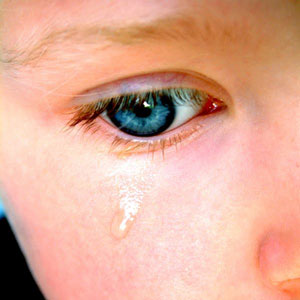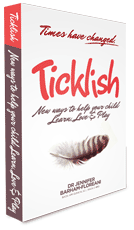 I recently watched a heart-warming TED talk in which the speaker Shawn Anchor recounts a personal childhood story…
I recently watched a heart-warming TED talk in which the speaker Shawn Anchor recounts a personal childhood story…
At the age of 7, entrusted to play “nicely” with his four year old sister (he suggests ‘combat’) she falls off the top bunk bed and plummets to the floor on all fours. As the shock sets in on her little face and the tears well up, young Shawn wracks his seven year old brain to save the day… “Amy, Amy wait don’t cry! Did you see how you landed? No human lands on all fours like that. Amy… I think this means you are a unicorn”.
Childhood falls and the effect on our children’s health
The story above is a reminder of just how commonly knocks and falls occur in childhood. Can you recall how many times your child has ‘fallen hard’, intentionally or unintentionally? I can’t but I know it happens time and time again, over and over.
Typically by age three many children have had at least three major falls and by the age of seven, a child is likely to have had hundreds of falls. Of course the above story also says something of our children’s resilience, however as a practitioner and mother I am aware that this “bounce-back” resilience may hide subtle damage that leads to poor postural and neurological function across time.1
The subtle signs and symptoms that can result from falls can go unnoticed by parents or be put down to other things, and if left unchecked, can lead to entrenched health problems.2 We need to keep in mind that each seemingly insignificant slip and fall our child has does add up, and that as the branch bends, so grows the tree…
Minor accidents can subluxate your child’s spine
The spine and skull generally take the brunt of knocks, bumps and falls in childhood. Researchers have found that birth to two years of age, is a critical period of brain development, and injuries can have long-lasting or even permanent effects on the structure and function of the brain 3.
As you know, the spine and skull protect our children’s precious brain and nervous system (or their “communication highway” for thinking, feeling, and behaving). When a child’s body is suddenly jarred in an accident, muscles surrounding the spine protectively contract, including muscles that directly attach to the delicate nerve coverings themselves4. This causes the spine to tension and misalign (subluxate) and may negatively affect nervous system function5. With a subluxated spine, our child’s communication highway is no longer working at 100%, potentially altering the way they are able to think, feel and behave.6
When do childhood accidents and injuries most commonly occur?
Slips and falls are a common part of growing up and there are a number of especially common times that they may occur.
Strain during birth. Studies have shown that the birth process can lead to strain of upper neck muscles (suboccipitals) in newborns, subluxating the spine and potentially effecting brain stem centres. Conversely, this strain may not show up as visible clinical symptoms7. One study found that out of 1250 infants examined, 95 % had neck strain from the birth process8. Poor handling of newborns and babies can also create spine and nerve distress as can over zealous siblings tumbling on infants etc.
Playground falls. Researcher Colin Macarthur9 lists a number of descriptive studies demonstrating that 60% to 80% of all medically-attended playground injuries are due to falls and that in the US alone, over 200,000 children are taken to hospital each year to have playground injuries assessed.
Other likely times that our children will become subluxated include learning to walk, run, or ride a bike, sporting activities or hobbies, and minor or major car accidents.
“My child always seems fine once they stop crying!”
After the initial impact of a fall or accident, we assume most children have recovered well when they no longer complain about pain or other symptoms, but this is not always the case. Often these problems remain undetected, but they may go onto compromise our child’s health over a period of months or years with seemingly unrelated issues such as growing pains, compromised immune strength or digestive issues for example. The impact of a fall may result in:
a) Undetected subluxations
Even without obvious symptoms your child can still be subluxated. One study examined a group of apparently healthy children and found that 15.8% had cervical subluxations (neck problems) and 40% had pelvic subluxations (10).
b) Problems later in childhood
It is more common than you’d think for children to experience headache and back pain for “no apparent reason”. In fact in any given year, up to 50% of children and adolescents will experience back pain and around a third experience recurrent episodes of this pain (11) Chiropractors can often trace back the triggering event to these types of small physical impacts.
c) Problems later in adulthood
Much later as adults we may experience a health crisis that seemed to “simply happen out of the blue”. A person may bend to tie a shoelace and be unable to straighten up, or they may wake up one morning “suddenly” unable to move their neck. Years and years of tiny physical injuries have accumulated to breaking point that is costly to heal in terms of money, time and energy.
The best time to invest in helping the body heal is straight away!
Our babies and children’s health is the most precious thing in the world. Whether you wish to take your child for massage or too see a physiotherapist. To see an osteopath or a chiropractic the time to act is – as soon as you can.
The Journal of Neuroscience states that whilst “the first year of life may be a period of developmental vulnerability, it is also be the period in which therapeutic interventions can have the greatest positive effect.” 12
Chiropractic for babies and children is evidenced to be gentle, safe and effective.13 Babies can be checked by chiropractors very soon after birth and special techniques have been developed to carefully correct any subluxated areas. Many chiropractors have a special focus on family health and working with babies and young children. The important thing is to find a chiropractor, osteopath, masseur or health care provider that you personally feel a connection with, and who has a holistic perspective on strengthening the body and enhancing the vitality and wellbeing of your family.
. . .
WRITTEN BY:
Jennifer Barham- Floreani
Bach. Chiropractic, Bach. App Clinical Science
Registered internationally, no longer practicing as a chiropractor in Australia.
Dr Kate Marshall
BSc.(Clin), BSc.(Chiro), BA(Psych)
. . .
3 and 12
Knickmeyer RC, Gouttard S, Kang C, Evans D, Wilber K, Smith JK, Hamer RM, Lin W, Gerig G, Gilmore JH. A structural MRI study of human brain development from birth to 2 years. The Journal of Neuroscience 2008; 28(47):12176-12182.
4, McPartland JM, Brodeur RR. Rectus Capitis Posterior Minor: A Small But Important Suboccipital Muscle. Journal of Bodywork and Movement Therapies 1999; 3(1): 30-35.
5, 6 Chestnut JL. The 14 Foundational Premises for the Scientific and Philosophical Validation of the Chiropractic Wellness Paradigm. The Wellness Practice. Chestnut Wellness and Chiropractic Corporation. 2003.
7, 8 Guttman G. Blocked Atlantal Nerve Syndrome in Babies and Infants. Manuelle Medizin 1987; 25. Also reviewed in Chiropractic Report 1989;3(2) (as cited in Chestnut, 2003)
7 Biedermann H. Kinematic Imbalances Due to Suboccipital Strain in Newborns. Manual Medicine 1992,6 (as cited in Chestnut, 2003).
9) Macarthur C, Xiaohan H, Wesson DE, Parkin PC. Risk factors for severe injuries associated with falls from playground equipment. Accident Analysis and Prevention 2000; 32: 377–382.
10 Anderson-Peacock L. Chiropractic adjustment of children. Can. Chiropractor 1996; 1(2): 21-26
11 Hartvigsen J, Hestbaek L. Children and Chiropractic Care: A Window of Opportunity. J Manipulative Physiol Ther 2009;32:603-605.
12 see 3
13, Alcantara J, Ohm J, Kunz D.The Safety and Effectiveness of Pediatric Chiropractic: A Survey of Chiropractors and Parents in a Practice-Based Research Network. Explore 2009; 5:290-295.
Shawn Anchor “The Happiness Advantage: Linking Positive Brains to Performance” TED talk. https://www.youtube.com/watch?v=GXy__kBVq1M

Take a look at Jennifer’s new book!
Ticklish — New Ways to Help
Your Child Learn, Love & Play


 I recently watched a heart-warming
I recently watched a heart-warming 

